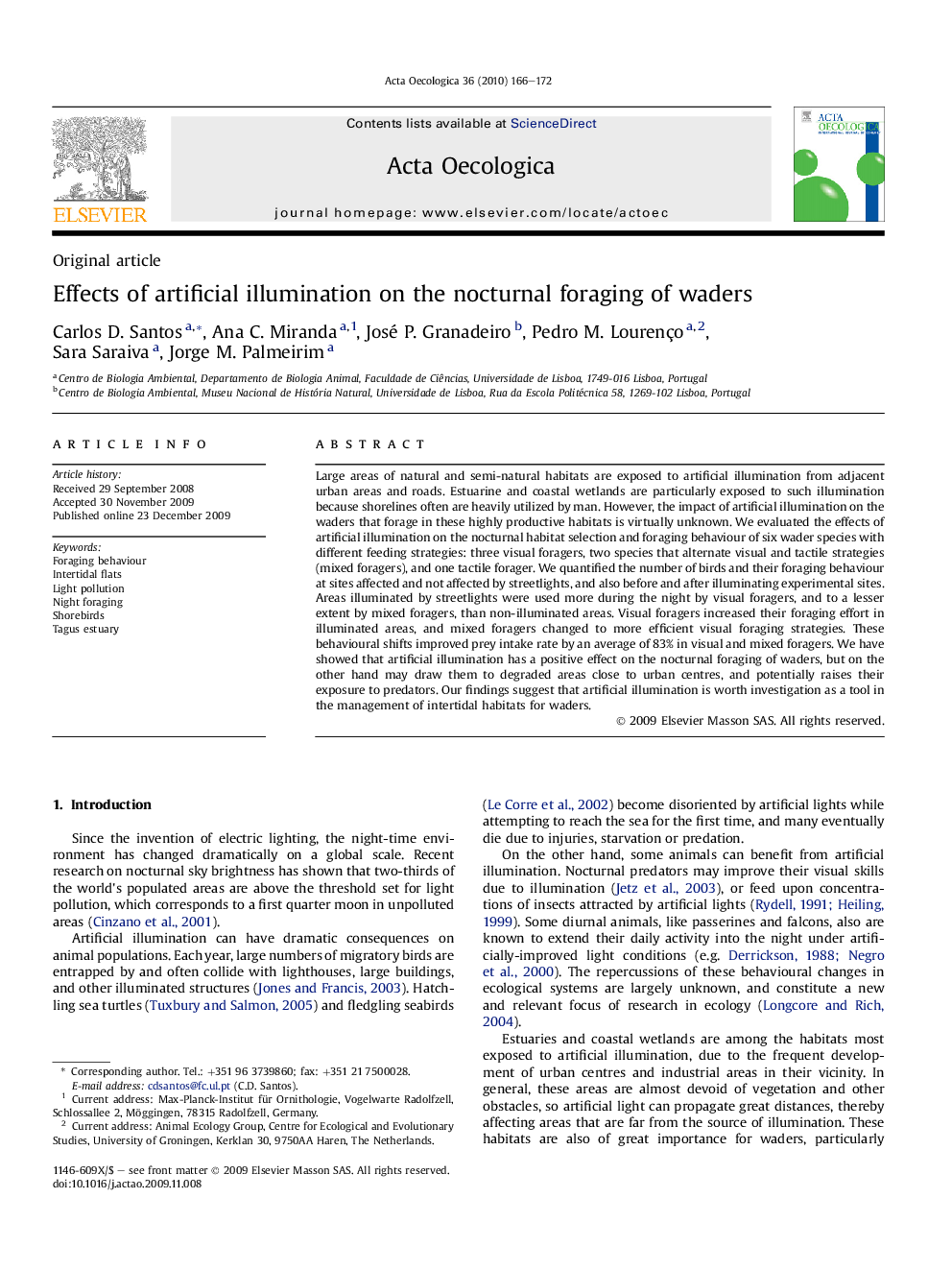| Article ID | Journal | Published Year | Pages | File Type |
|---|---|---|---|---|
| 4381672 | Acta Oecologica | 2010 | 7 Pages |
Large areas of natural and semi-natural habitats are exposed to artificial illumination from adjacent urban areas and roads. Estuarine and coastal wetlands are particularly exposed to such illumination because shorelines often are heavily utilized by man. However, the impact of artificial illumination on the waders that forage in these highly productive habitats is virtually unknown. We evaluated the effects of artificial illumination on the nocturnal habitat selection and foraging behaviour of six wader species with different feeding strategies: three visual foragers, two species that alternate visual and tactile strategies (mixed foragers), and one tactile forager. We quantified the number of birds and their foraging behaviour at sites affected and not affected by streetlights, and also before and after illuminating experimental sites. Areas illuminated by streetlights were used more during the night by visual foragers, and to a lesser extent by mixed foragers, than non-illuminated areas. Visual foragers increased their foraging effort in illuminated areas, and mixed foragers changed to more efficient visual foraging strategies. These behavioural shifts improved prey intake rate by an average of 83% in visual and mixed foragers. We have showed that artificial illumination has a positive effect on the nocturnal foraging of waders, but on the other hand may draw them to degraded areas close to urban centres, and potentially raises their exposure to predators. Our findings suggest that artificial illumination is worth investigation as a tool in the management of intertidal habitats for waders.
